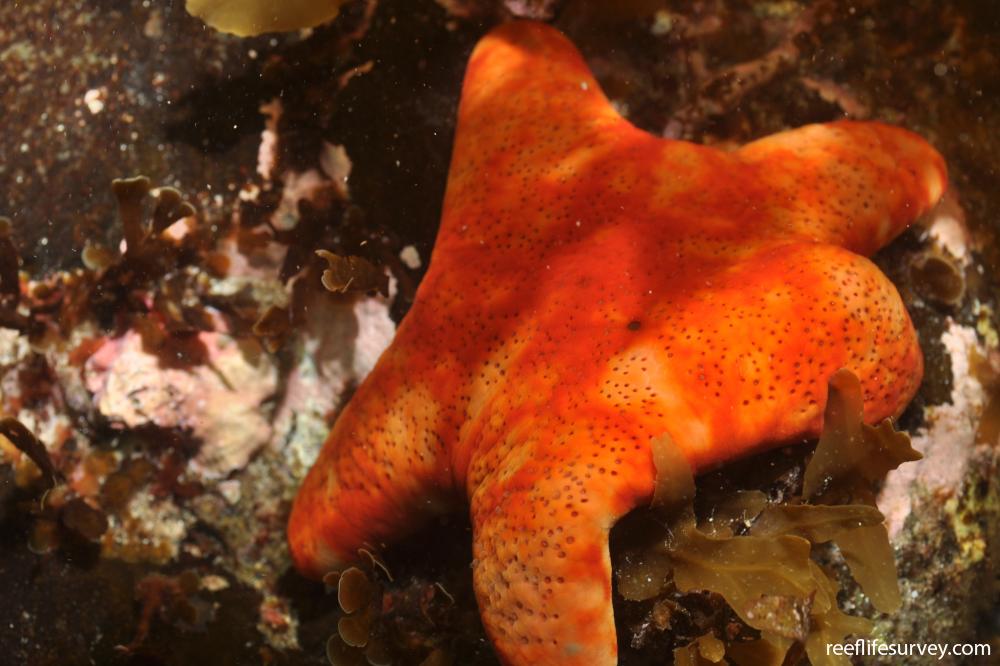Petricia vernicina
Velvet starSimilar Species
Same Genus
Distribution
Temperate Australasia
Description
Distinguished by its soft, spongy appearance, reddish colouration and very large respiratory papulae, which are generally obvious on the upper surface of living animals. Varies in appearance depending on location, but always with smooth surface and no distinct plates. Extended tube feet over the upper surface can give velvety looking texture. Dried specimens appear quite different from live animals as large marginal plates formerly hidden by the skin become apparent. The species occurs on sheltered and fully exposed reefs but is most common at moderately exposed sites. It feeds on encrusting invertebrates, particularly sponges, ascidians and bryozoans.
Information
Max Size: 18 cm
Sea Temperature Range: 10.5-23.2°C
Depth: 0-60m
Habitat Generalization Index: N/A
Also referred to as the SGI (Species Generalisation Index), this describes the habitat niche breadth of the species. Species with values less than 15 are found in a relatively narrow range of reef habitat types (specialists), while those over 25 may be found on most hard substrates within their range (generalists). Learn more here.
Conservation and Rarity
IUCN Status: Not Evaluated
Occurrence: Common (30.1% of sites)
Occurrence describes how often the species is found on surveys within its distribution. It is calculated as the % of reef sites surveyed by RLS divers across all the ecoregions in which the species has been observed
Abundance: Few (2 per transect)
Abundance is calculated as the average number of individuals recorded per RLS transect, where present.
Edit by: GJ Edgar. 2008. Australian Marine Life. New Holland, Sydney











